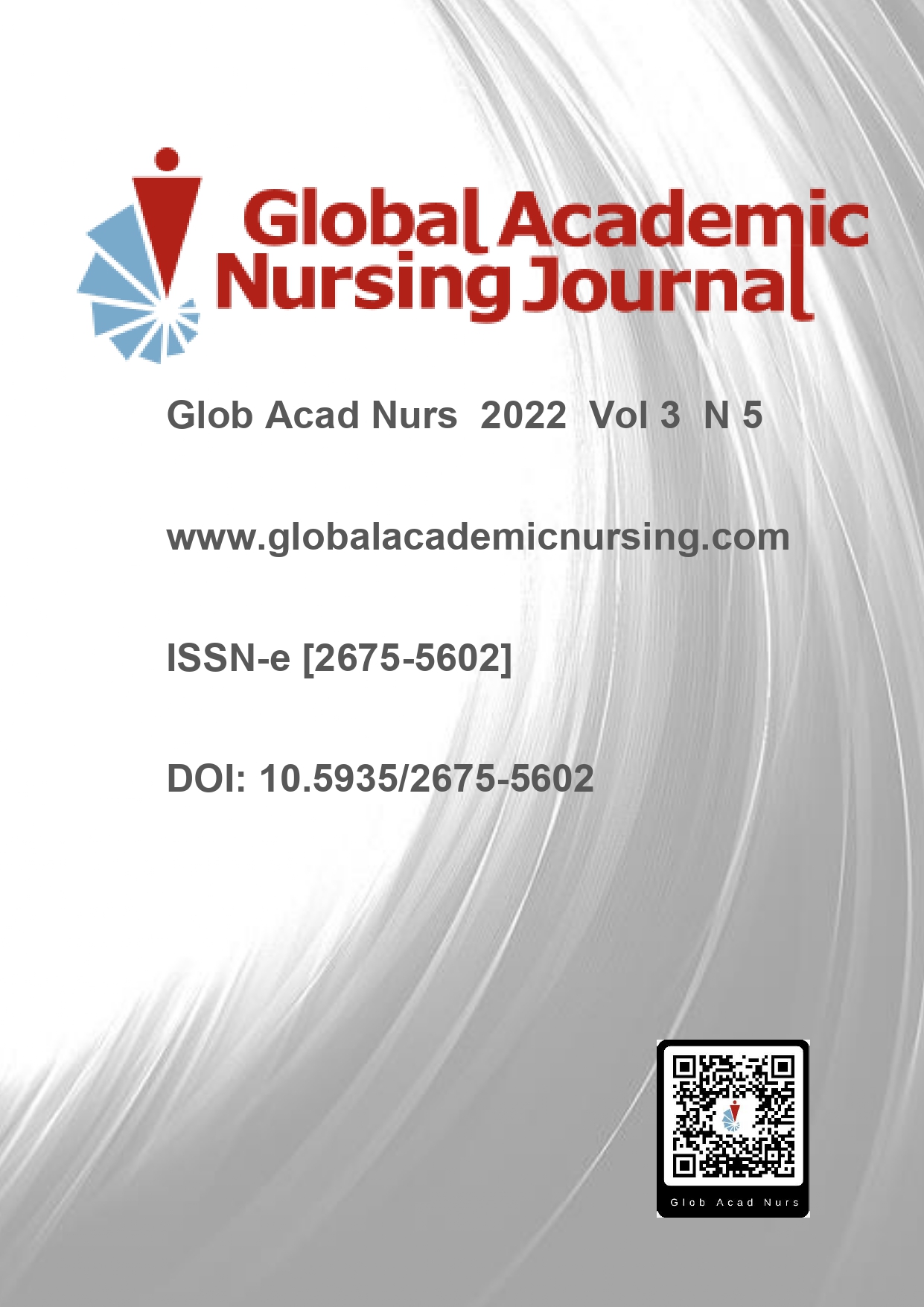Abstract
This is an integrative literature review, which sought to highlight and discuss the possibilities of pressure injury treatment in people diagnosed with COVID-19 in hospital, based on scientific publications indexed in the Medical Literature and Retrieval System Online database. , between 2020 and 2021. 24 articles were obtained. Following the inclusion criteria, 09 studies were selected for analysis. Some evidence in the literature that suggests a significant increase in pressure injuries in patients who develop severe acute respiratory syndrome associated with COVID-19, which requires prolonged intubation, tracheostomies and prone position. Pressure injuries were pointed out in many cases as unavoidable. Treatment is essential for existing injuries, but preventive measures to combat the main extrinsic risk factors are fundamental and have always been available to everyone in the health team. Therefore, prevention is the culture of risk factor control and, regardless of the patient's condition, we must prevent pressure injuries.
References
Ministério da Saúde (BR). Painel Coronavírus [Internet]. 2022 [acesso em 29 mai 2022]. Disponível em: https://covid.saude.gov.br/
Organização Pan-Americana da Saúde (OPAS). Folha informativa COVID-19 - Escritório da OPAS e da OMS no Brasil [Internet]. Brasília (DF): OPAS; 2020 [acesso em 08 dez 2020]. Disponível em: https://www.paho.org/pt/covid19
Criado PR, Rivitti EA, Sotto MN, Valente NYS, Aoki V, Carvalho JF, et al. Vasculopatia livedoide: uma doença cutânea intrigante. An. Bras. Dermatol. [Internet]. 2011 Oct [cited 2021 Dec 09];86(5):961-977. Disponível em: http://www.scielo.br/scielo.php?script=sci_arttext&pid=S0365-05962011000500015&lng=en
Long B, Brady WJ, Koyfman A, Gottlieb M. Cardiovascular complications in COVID-19. Am J Emerg Med. 2020;38(7):1504–1507.
Schett G, Sticherling M, Neurath MF. COVID-19: risk for cytokine targeting in chronic inflammatory diseases? Nat Rev Immunol. 2020;20(5):271–272.
Casas C, et al. Classification of the cutaneous manifestations of covid-19: a rapid prospective nationwide consensus study in spain with 375 cases. Supplementary material: Photographic atlas. British Journal of Dermatology 2020.
Martel, Tanya, and Dennis P. Orgill. "Medical Device–Related Pressure Injuries During the COVID-19 Pandemic." Journal of Wound Ostomy & Continence Nursing. 2020;47(5):430-434.
Girard R, Baboi L, Ayzac L, Richard JC, Guérin C; Proseva Trial Group. The impact of patient positioning on pressure ulcers in patients with severe ARDS: results from a multicenter randomized controlled trial on prone positioning. Intensive Care Med. 2014;40(3):397–403.
The Joint Commission. Quick Safety 43: managing medical device-related pressure injuries. Disponível em: https://www.jointcommission.org/resources/news-and-multimedia/newsletters/newsletters/quick-safety/quick-safety-43-managing-medical-devicerelated-pressure-injuries. Acesso em: 08 de dez. de 2021.
Black J, Cuddigan J, Capasso V, Cox J, Delmore B, Munoz N, Pittman J. on behalf of the National Pressure Injury Advisory Panel. Unavoidable Pressure Injury during COVID-19 Crisis: A Position Paper from the National Pressure Injury Advisory Panel [Internet]. 2020 [acesso em 23 dez 2022]. Disponível em: www.npiap.com
Magro C, Mulvey JJ, Berlin D, Nuovo G, Salvatore S, Harp J, Baxter-Stoltzfus A Laurence J. Complement associated microvascular injury and thrombosis in the pathogenesis of severe COVID-19 infection: A report of five cases. Transl Res. 2020. DOI: 10.1016/j.trsl.2020.04.007
Ganong LH. Integrative Reviews of Nursing. Rev Nurs Health. 1987;10(1):1-11
National Pressure Ulcer Advisory Panel (NPUAP) announces a change in terminology from pressure ulcer to pressure injury and updates the stages of pressure injury [Internet]. 2016 [acesso em 08 dez 2021]. Disponível em: https://npuap.com/
European Pressure Ulcer Advisory Panel (EPUAP). National Pressure Injury Advisory Panel and Pan Pacific Pressure Injury Alliance. Prevenção e tratamento de úlceras/lesões por pressão: guia de consulta rápida. (edição em português brasileiro). EmilyHaesler (Ed.). EPUAP/NPIAP/PPPIA; 2019.
Dalmedico MM, Salas D, Oliveira AM, Baran FDP, Meardi JT, Santos MC. Efficacy of prone position in acute respiratory distress syndrome: overview of systematic reviews. Rev Esc Enferm USP. 2017;(51):01-08.
Brasil. Ministério da saúde. Agência nacional de vigilância sanitária. Fundação Osvaldo Cruz. Protocolo para prevenção de úlcera por pressão [Internet]. 2013 [acesso em 08 dez 2021]. Disponível em: http://www20.anvisa.gov.br/segurancadopaciente/index.php/publicaco
Hospital de Clínicas da Universidade Federal do Triângulo Mineiro (HC-UFTM), administrado pela Empresa Brasileira de Serviços Hospitalares (Ebserh) – Ministério da Educação. Protocolo assistencial multiprofissional: Prevenção e tratamento de lesão por pressão. Serviço de Educação em Enfermagem. Uberaba-MG: HC-UFTM/Ebserh, 2018. 26p.
United Kingdon. National Institute for Health and Care Excellence (NICE). Pressure Ulcers: prevention and management of pressure ulcers. London; 2014.
Santos ICRV, Junior JLS, Ribeiro LL, Xavier RF, Almeida RB, Morato JEM. Usabilidade do sistema de classificação de feridas por cor. Ciência, Cuidado E Saúde. 2017;16(4).
Moore Z, Patton D, Avsar P, McEvoy NL, Curley G, Budri A, Nugent L, Walsh S, O'Connor T. Prevention of pressure ulcers among individuals cared for in the prone position: lessons for the COVID-19 emergency. J Wound Care. 2020 Jun 2;29(6):312-320.
Martel T, Orgill DP. Medical Device-Related Pressure Injuries During the COVID-19 Pandemic. J Wound Ostomy Continence Nurs. 2020 Sep/Oct;47(5):430-434.
Yu N, Li Z, Long X, Huang J, Cao W, Zhang Y, Yang Y, Liu Z, Liu Z, Zhang S, Wang X. Pressure injury: A non-negligible comorbidity for critical Covid-19 patients. J Plast Reconstr Aesthet Surg. 2021 Mar;74(3):644-710.
The Importance of Pressure Injury Evidence During COVID-19. Adv Skin Wound Care. 2020 Aug;33(8):399. doi: 10.1097/01.ASW.0000684272.94842.03. PMID: 32697471.
Fourie A, Ahtiala M, Black J, Hevia H, Coyer F, Gefen A, LeBlanc K, Smet S, Vollman K, Walsh Y, Beeckman D. Skin damage prevention in the prone ventilated critically ill patient: A comprehensive review and gap analysis (PRONEtect study). J Tissue Viability. 2021 Nov;30(4):466-477.
Chagas JA, Oliveira MN, Botechia FR, Christ H, Nascimento LR, Silva CA, Pires BC, Melo EBM. Processo de enfermagem aplicado ao paciente portador de pé diabético: relato de experiência. Glob Acad Nurs. 2020;1(2):e27. https://dx.doi.org/10.5935/2675-5602.20200027
Field MH, Rashbrook JP, Rodrigues JN. Hydrocolloid dressing strip over bridge of nose to relieve pain and pressure from Filtered Face Piece (FFP) masks during the coronavirus (COVID-19) pandemic. Ann R Coll Surg Engl. 2020 May;102(5):394-396.

This work is licensed under a Creative Commons Attribution-NonCommercial-NoDerivatives 4.0 International License.
Copyright (c) 2022 Global Academic Nursing Journal

